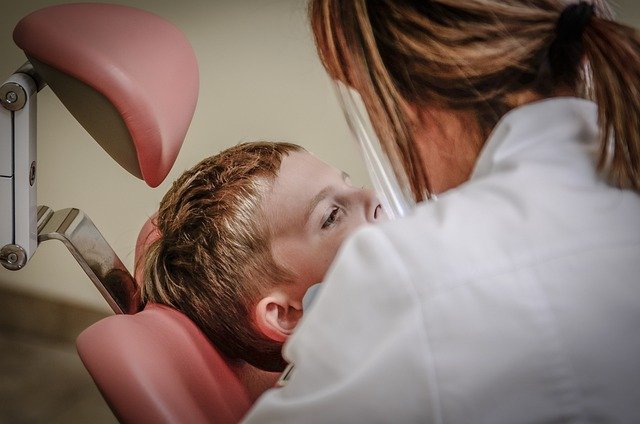Recognizing spreading skin infections: signs and when to seek care
Spreading skin infections can escalate quickly. Recognizing early changes—expanding redness, increasing swelling, fever, or pain—helps determine whether woundcare at home is sufficient or medical evaluation is needed. This summary highlights typical signs, basic steps you can take, and when to contact local services or a clinician.

Spreading skin infections often begin as a small break in the skin that allows bacteria to enter and multiply. Early awareness of progressive redness, growing warmth, spreading swelling, or the emergence of fever can reduce delays in receiving appropriate care. This article describes common warning signs, how clinicians approach diagnosis and microbiology, outpatient and telemedicine options, and practical woundcare and prevention measures to reduce recurrence.
This article is for informational purposes only and should not be considered medical advice. Please consult a qualified healthcare professional for personalized guidance and treatment.
How does a spreading infection present on the skin?
A spreading skin infection typically causes a patch of skin that becomes more red, warm, tender, and swollen over hours to days. The edges of the affected area may become poorly defined and expand outward; some infections produce skin blisters or small pustules. Pain that worsens rather than improves, streaking redness that follows lymphatic channels, or rapid growth of the lesion are signs that the infection may be spreading rather than resolving. Underlying conditions such as diabetes, immune suppression, or poor circulation can make spread more likely.
When should swelling, redness, or fever prompt concern?
Swelling and redness that increase in size despite basic woundcare, or the development of fever, chills, or systemic symptoms are indicators to seek medical evaluation. Fever suggests the infection is triggering a wider immune response and may require systemic antibiotics. Rapidly enlarging redness, new numbness, severe pain, or hardening of the skin may indicate deeper infection. Infants, older adults, and people with chronic illnesses should be evaluated sooner because they can deteriorate more quickly.
How are diagnosis and microbiology used?
Diagnosis usually starts with a clinical exam: history of a wound or insect bite, pattern of spread, and vital signs. Clinicians may swab open wounds, obtain blood tests, or, in select cases, collect tissue for microbiology to identify causative organisms. Many cases are caused by common bacteria such as streptococci and staphylococci; microbiology helps tailor antibiotic selection when cultures return. Imaging (ultrasound or CT) may be used if an abscess or deep tissue involvement is suspected. Accurate diagnosis helps avoid unnecessary antibiotics and guides targeted therapy.
What outpatient and telemedicine care is available?
Most uncomplicated spreading skin infections can be managed as outpatient cases with oral antibiotics, woundcare guidance, and follow-up. Telemedicine can be useful for early assessment—clinicians can evaluate photos or live video to judge size, evolution, and need for in-person care or urgent attention. Local services such as urgent care centers or community clinics provide in-person examination, drainage when abscesses are present, and intravenous therapy if needed. Ensure telemedicine providers have processes for arranging in-person evaluation when severity is unclear.
How are antibiotics used and stewardship applied?
Antibiotics are central to treating bacterial skin infections, but appropriate selection, dosing, and duration matter. Clinicians choose agents that cover likely pathogens and adjust therapy based on microbiology when available. Stewardship principles aim to minimize unnecessary broad-spectrum antibiotic use to reduce resistance and adverse effects: start with the narrowest effective agent, prescribe the shortest effective duration, and review treatment as results arrive. Adherence to the prescribed course and communicating allergies or prior reactions to antibiotics are important for safe care.
How to manage woundcare, prevention and recurrence?
Effective woundcare reduces the risk of spread and recurrence: clean breaks in the skin promptly with soap and water, apply appropriate dressings, and protect the area from further trauma. Keep wounds dry and monitor for enlargement of redness or new drainage. Prevention includes skin hygiene, managing chronic conditions like eczema or diabetes, and treating tinea or other skin problems that break the barrier. Recurrence may prompt assessment for underlying causes, decolonization strategies in select cases, or referral to dermatology or infectious disease for recurrent infections. In pediatrics, parents should watch for rapid change, fever, or irritability and seek evaluation earlier.
In summary, recognize expanding redness, increasing swelling, worsening pain, or systemic symptoms like fever as signals to seek medical evaluation. Early clinical diagnosis, appropriate microbiology testing when indicated, judicious antibiotic use with stewardship in mind, and good woundcare can limit progression and recurrence. Outpatient and telemedicine resources can provide timely assessments, but urgent in-person care is warranted if signs suggest rapid spread or systemic illness.






